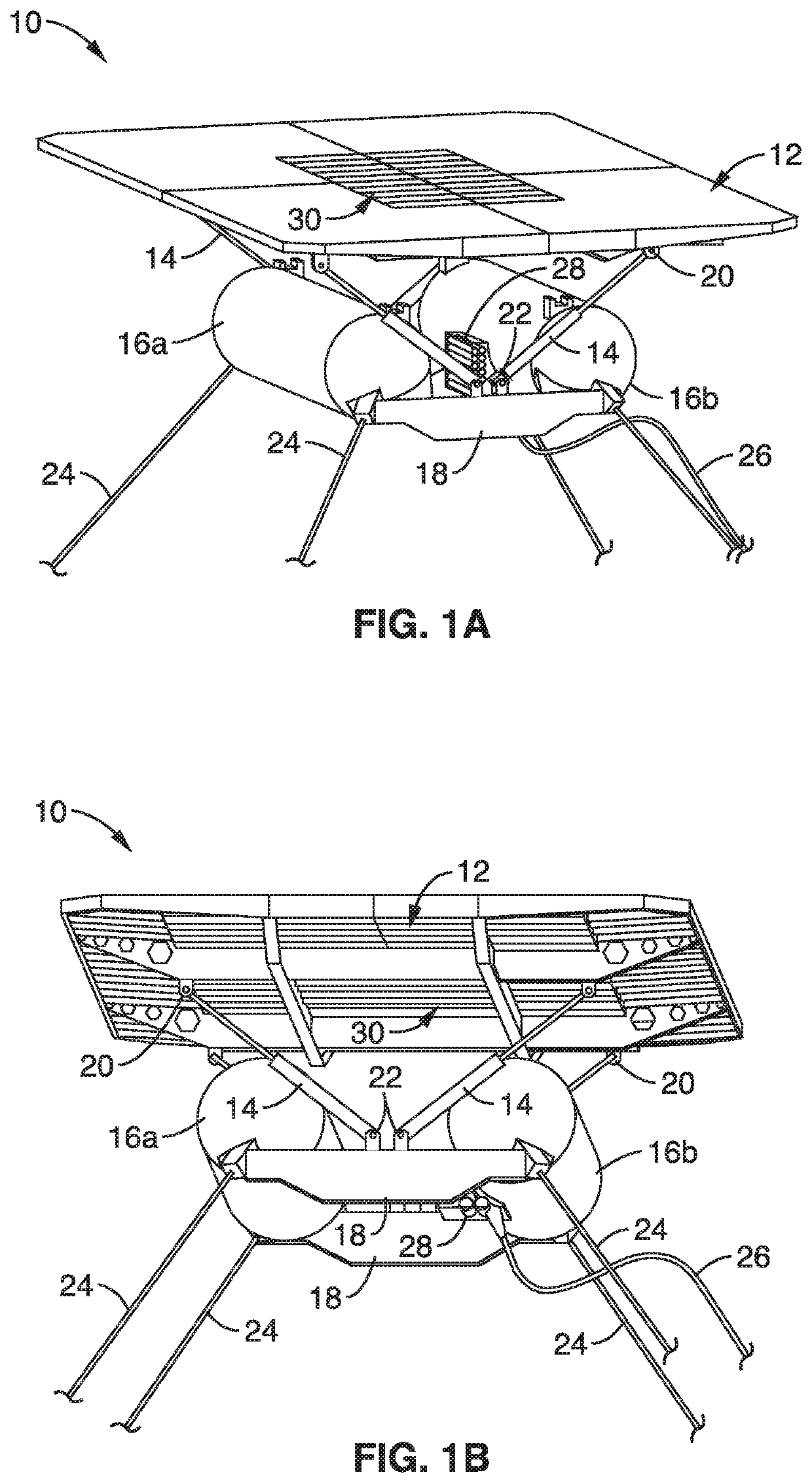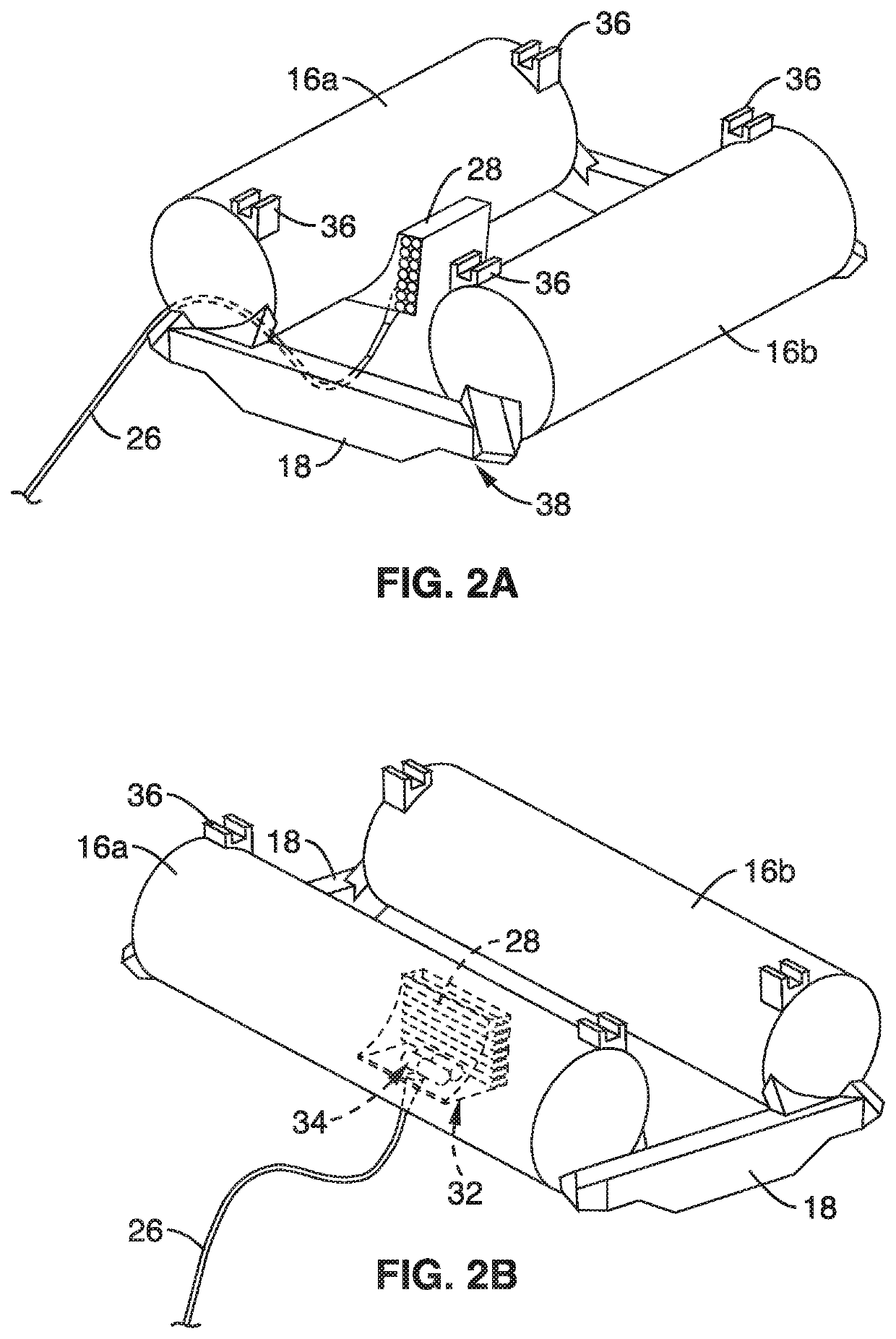Submerged wave energy converter for shallow and deep water operations
a technology of submerged wave energy and deep water, which is applied in the direction of buoyancy control, mechanical equipment, machines/engines, etc., can solve the problem of not recovering energy from the other modes of motion, and achieve the effect of preventing the neutralization of the dynamic pressure differen
- Summary
- Abstract
- Description
- Claims
- Application Information
AI Technical Summary
Benefits of technology
Problems solved by technology
Method used
Image
Examples
Embodiment Construction
[0060]Referring more specifically to the drawings, for illustrative purposes, embodiments of the apparatus and system for wave energy conversion are generally shown. Several embodiments of the technology are described generally in FIG. 1 through FIG. 8 to illustrate the apparatus and the system characteristics and functionality. It will be appreciated that the methods may vary as to the specific steps and sequence and the systems and apparatus may vary as to structural details without departing from the basic concepts as disclosed herein. The method steps are merely exemplary of the order that these steps may occur. The steps may occur in any order that is desired, such that the method still performs the goals of the claimed technology.
[0061]Turning now to FIG. 1A and FIG. 1B, an apparatus 10 for the conversion of energy stored in ocean waves to electricity that can be transferred to shore and fed into the grid is schematically shown.
[0062]In this illustrative system, a rigid plate ...
PUM
 Login to View More
Login to View More Abstract
Description
Claims
Application Information
 Login to View More
Login to View More - R&D
- Intellectual Property
- Life Sciences
- Materials
- Tech Scout
- Unparalleled Data Quality
- Higher Quality Content
- 60% Fewer Hallucinations
Browse by: Latest US Patents, China's latest patents, Technical Efficacy Thesaurus, Application Domain, Technology Topic, Popular Technical Reports.
© 2025 PatSnap. All rights reserved.Legal|Privacy policy|Modern Slavery Act Transparency Statement|Sitemap|About US| Contact US: help@patsnap.com



